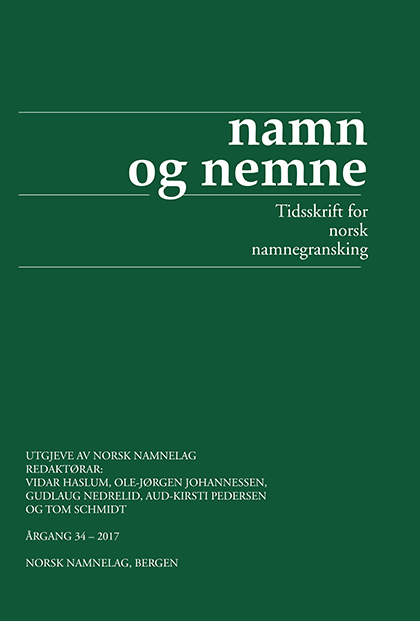Sammendrag
The Old Norse Brúsi m. was a first name and a byname in the medieval period in Norway and Iceland. A similar byname in Danish was Bruse, a name that has lived as a very rare first name in Norway until present. In Norway in the medieval time, at least until 1350, many farm names got a first name linked to it. Bruse has a second meaning in the county of Akershus since it is the local plant name for juniper (Juniperus communis L.). The juniper name is unknown in Old Norse, but it is probably old. In Western Norway bruse has lot of different explanations and the most interesting in connection with farm names is the one used for small pines or junipers especially wide and branched. In the valley of Hallingdal this is an appellative for small pines with dried-up needles, too. The article deals with the use of Old Norse Brúsi in farm names in comparison to the appellative brúsi. The monumental work Norske Gaardnavne does not explain farm names with the first part Bruse- distinctively. The conclusion in this article is that most farm names of medieval or even older origin linked with Bruse- are possible to explain by Brúsi. One exception may be Brøsholen, possibly explained by the juniper name. Names of farms with their origin in the 19th century and composed with Bruse- usually have appellative definitions. Brusegard in the county of Sogn og Fjordane has an onomatopoetic origin which can be explained by the sound of the nearby river.

